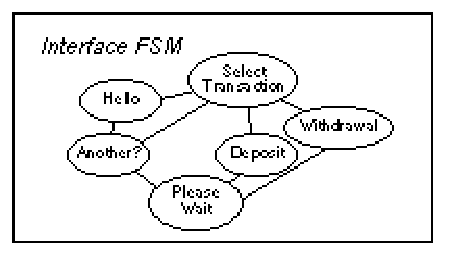-
Similar to standard index cards
-
Each card contains:
-
Responsibilities
-
(eventually to become a list of operations and behaviors.)
-
-
Collaborations
-
(eventually to become a list of use cases.)
-
-
Optional class attributes
-
(This is a low priority list, since attributes are part of implementation.)
-
-






